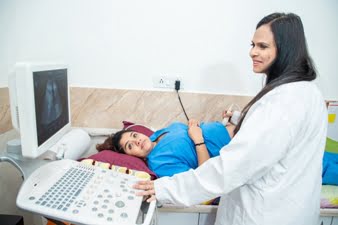Why is USG Both Hand Important?
1. Diagnosis of Tendon and Ligament Injuries: Ultrasound is highly effective in detecting tendon tears, ligament sprains, or inflammation such as tendinitis. It helps assess conditions like trigger finger, De Quervain's tenosynovitis, and other tendon-related injuries, providing a clear view of the affected area.
2. Evaluation of Joint Disorders: This scan is useful for identifying joint effusions, arthritis, synovitis, and rheumatoid arthritis. It helps in evaluating the extent of joint inflammation and detecting early signs of joint degeneration.
3. Detection of Nerve Entrapments: Conditions like carpal tunnel syndrome can be effectively evaluated using ultrasound. It allows the visualization of the median nerve and can detect swelling or compression of the nerve, which is common in carpal tunnel syndrome.
4. Assessment of Blood Flow and Vascular Health: The Doppler feature of ultrasound can be used to evaluate the blood flow in the hands, helping detect vascular conditions such as Raynaud's phenomenon or arterial blockages, which can affect circulation in the hands.
5. Guidance for Interventional Procedures: Ultrasound can assist in guiding injections (like corticosteroid injections) into specific areas, such as tendons or joints, ensuring accurate placement of the needle for effective treatment.
Looking for expert imaging services? USG Both Hands is a reliable diagnostic tool to assess blood flow, detect clots, and evaluate soft tissue conditions in your hands. At Diagnopein, the best sonography centre near me, we ensure accurate results and patient-centric care. Conveniently located in Pune, we offer advanced equipment and experienced professionals for precise diagnostics. Trust us for your health assessments.
Who Should Consider USG Both Hand?
This ultrasound scan is recommended for individuals experiencing:
1. Persistent Hand Pain: Patients with ongoing pain or discomfort in the hands that have not improved with basic treatment may benefit from a detailed ultrasound to diagnose the underlying issue.
2. Swelling or Inflammation: If there is noticeable swelling, stiffness, or signs of inflammation in the hands, ultrasound can help identify the cause, such as arthritis or tenosynovitis.
3. Suspected Nerve Entrapment: Individuals with symptoms of carpal tunnel syndrome, such as tingling, numbness, or weakness in the hands, may be advised to undergo this scan for assessment.
4. Trauma or Injury: In cases of hand trauma, like sports injuries, falls, or accidents, ultrasound can detect damage to soft tissues, tendons, or ligaments.









